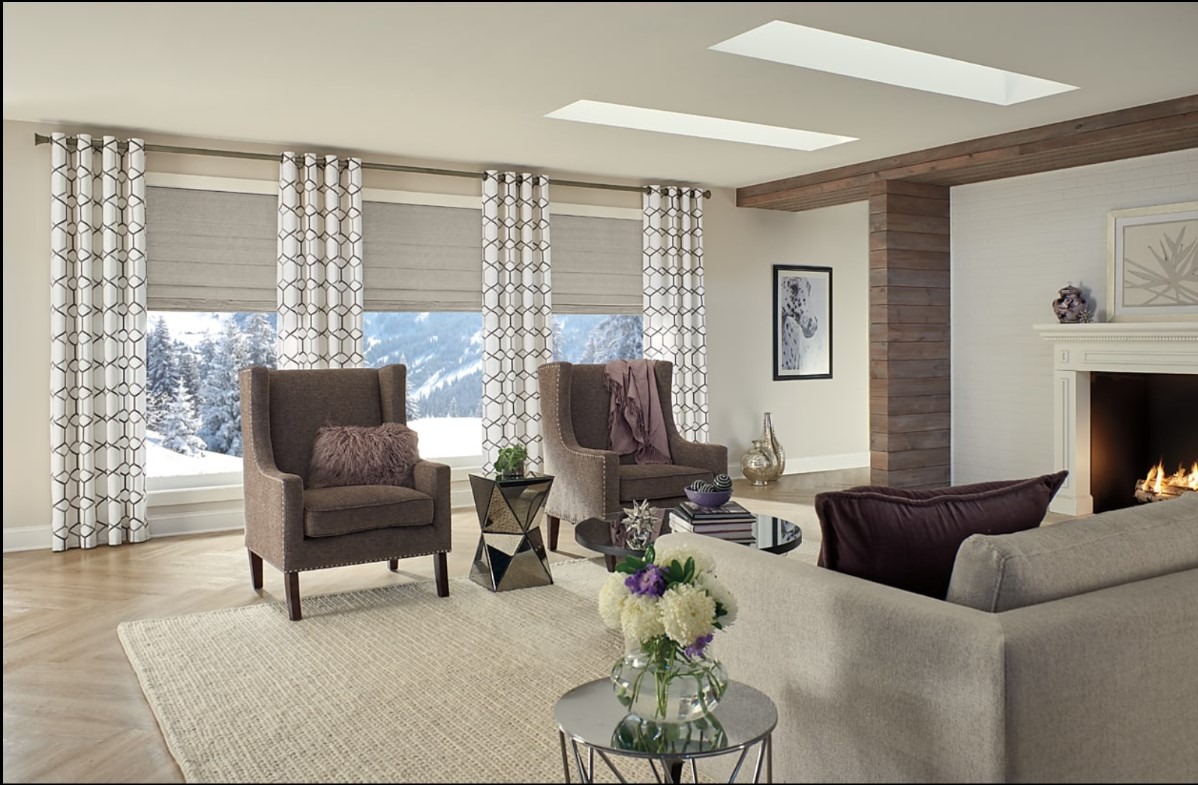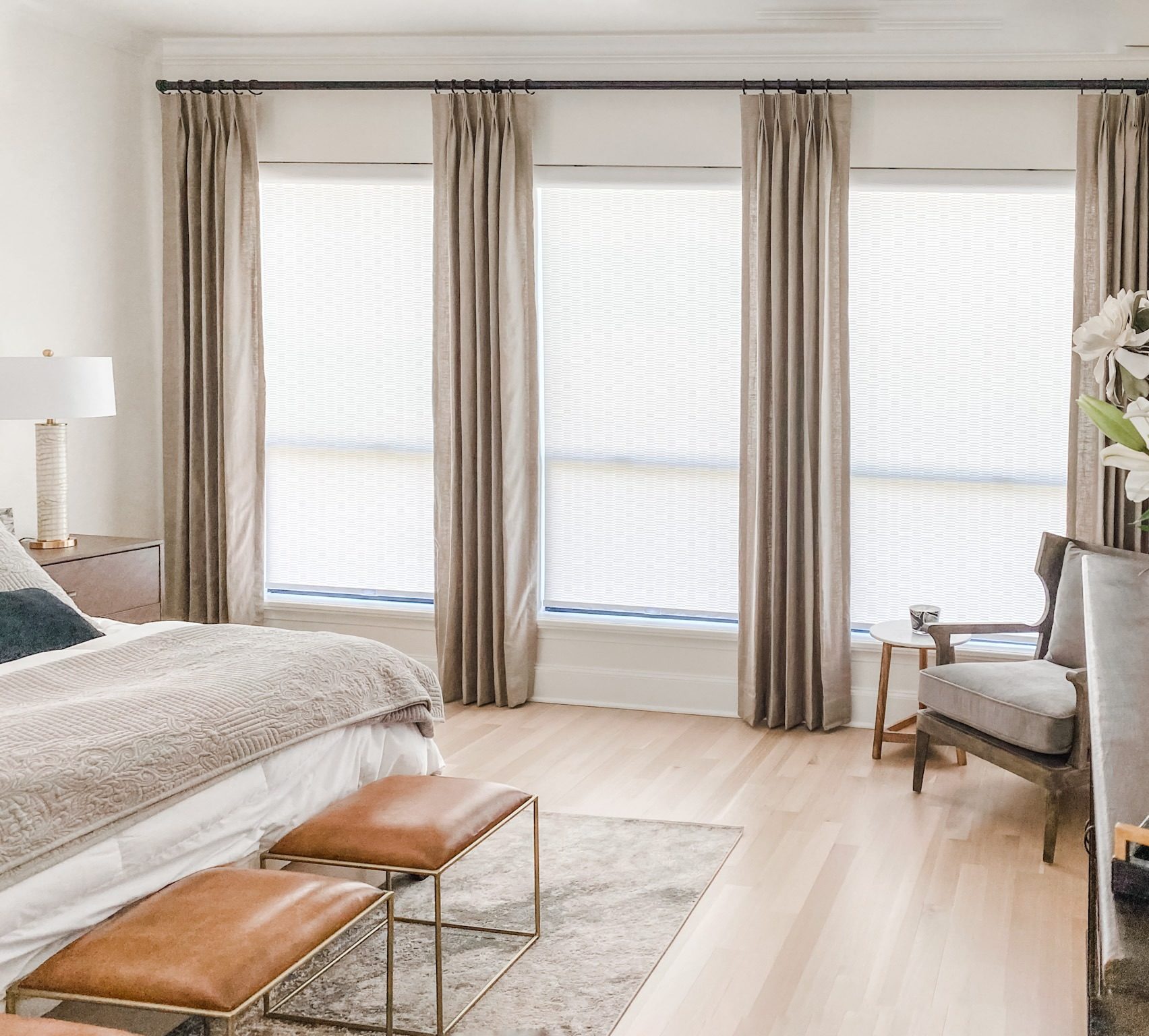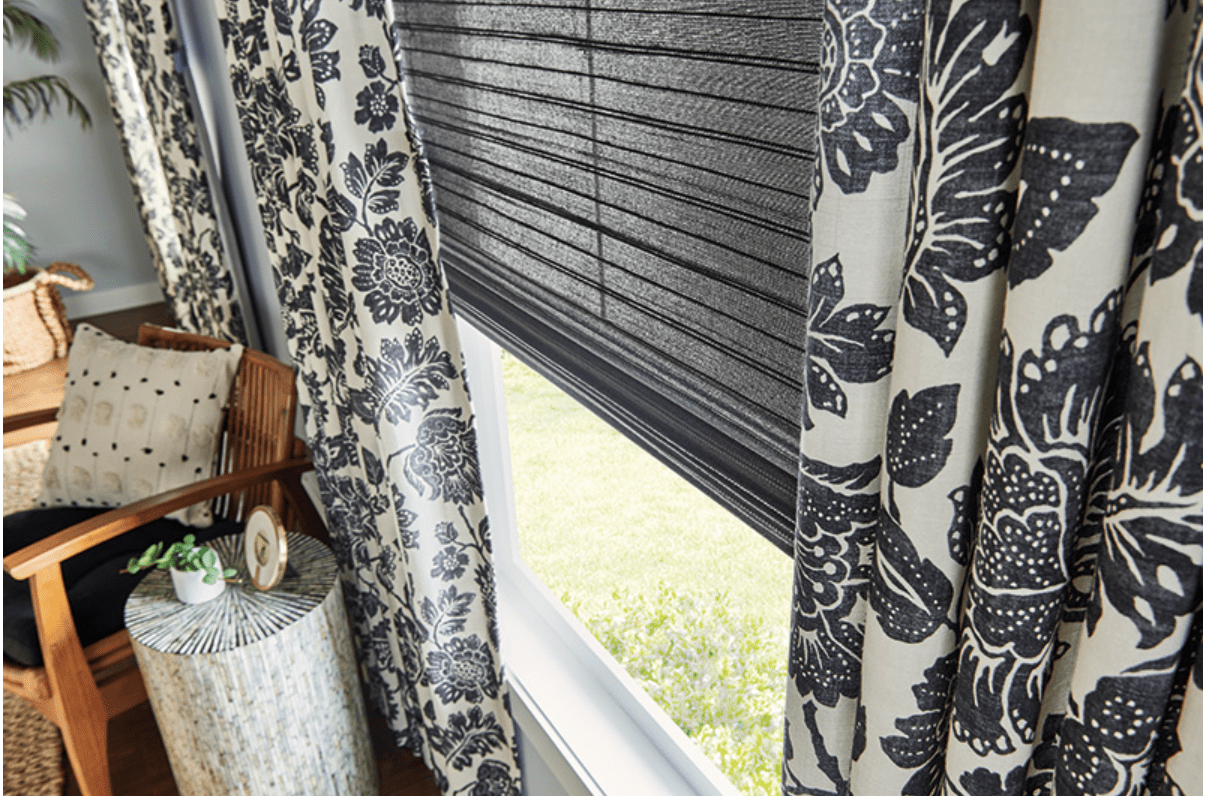With the right window treatments, windows in a room seem as if their only purpose is to enhance the overall visual appeal of the surrounding decor. Behind the scenes however, the ideal window treatments serve important functions such as offering shade during the summer, protecting privacy, keeping a room warmer during the winter and/or cooler in the summer. When window treatments seamlessly perform these essential functions, they reduce life’s daily little annoyances by making life just a bit simpler.

Consider Your Goals for Window Treatments
Homeowners typically want to layer window treatments because they expect certain window areas to serve more than one function. Perhaps you prefer the look of sheer drapes, yet find they don’t offer the privacy you want during the evenings. Or perhaps you’ve always loved the visual interest and depth provided by layering treatments of varying colors and/or textures. There are no right or wrong goals when it comes to selecting the right window treatments. It’s simply about the decor you prefer, and what is going to work for you and your family’s needs.
So how do you get everything you want out of window treatments? It may be helpful to write down the functions you want all your window treatments to accomplish and then review your list before you make your final selections. If your final selections are able to check off each one of your goals, you know you are likely making the right investment!

Made in the Shade Blinds Blackout Shades and Draperies
Tips and Tricks for Layering
Layering window treatments actually can do a lot more than simply providing additional function. Depending upon one’s goals and choice of treatments, layering can also:
- Draw the eye upward to make a room seem larger
- Add color(s) and/or texture to highlight a room’s decor
- Hide wall/room/outdoor flaws
Visual Expansion — Especially in smaller rooms, it’s possible to seemingly add space by hanging floor to ceiling drapes. Extra-long drapes draw the eye upward and also adds just a bit of drama to a room. When layering treatments in this manner, separating the drape hardware from blind or shade hardware also helps to avoid the appearance of hardware congestion that may occur if everything was hung at or near the same level.
Double Up on Drapes — Layering sets of drapes works particularly well for wider windows, and it’s a great way to add additional texture and/or colors. Layering sets of drapes also works well for those who often have a difficult time selecting just one pair!
Some homeowners may prefer a flowered drape, yet they decide to add a second single-colored pair to tone down the perception of an overly feminine room. Other homeowners love the look that multiple textures provide and decide to go with both a pair of cotton drapes and a complementary pair of sheer drapes as well.
Hiding Flaws — The right window treatments can also hide a multitude of flaws. It’s not uncommon for homeowners to have multiple goals that cannot be solved by one single window treatment. Some homeowners love the look of drapes on every window, but find one window provides a less than ideal view of the outdoors, so they decide to add a shade or blinds to block the view.
Others may have an awkwardly placed window within a room that is also responsible for excessive sun streaming into the room on most afternoons. Adding a shade or blinds solves the issue with excessive sun, but the window’s overall appearance still isn’t ideal. For these types of situations, perhaps adding a layer of drapes may be just the ticket for hiding the awkward look of the window placement.

Summary
If your windows are a source of frustration rather than something that adds to the enjoyment of your home, we can help! We would love to use our talents and professional expertise to assist you in selecting gorgeous window treatments that also provide all the essential functions your home life requires. Please contact us today for a complimentary in-home consultation.



